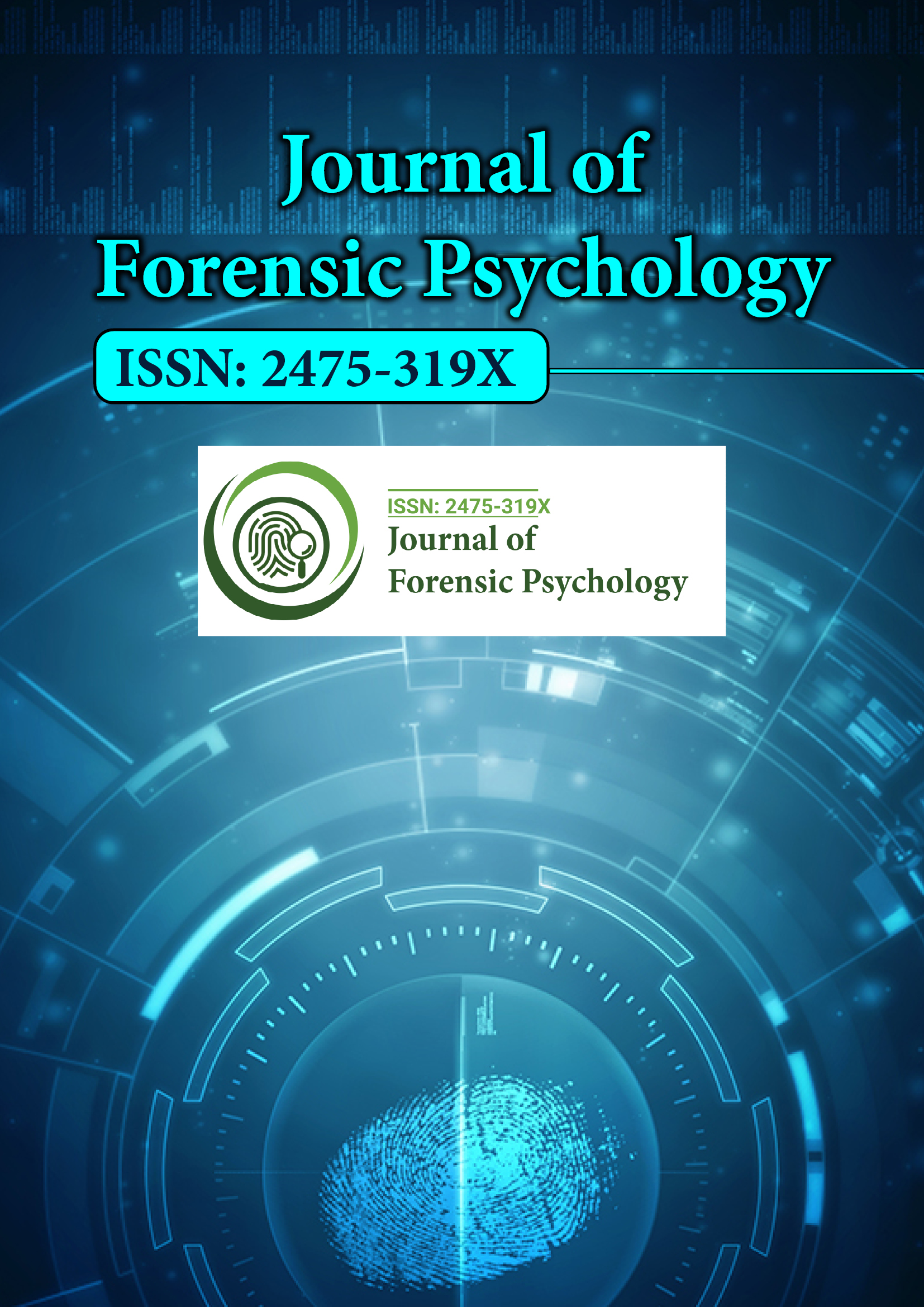Indexed In
- RefSeek
- Hamdard University
- EBSCO A-Z
- Publons
- Geneva Foundation for Medical Education and Research
- Euro Pub
- Google Scholar
Useful Links
Share This Page
Journal Flyer

Open Access Journals
- Agri and Aquaculture
- Biochemistry
- Bioinformatics & Systems Biology
- Business & Management
- Chemistry
- Clinical Sciences
- Engineering
- Food & Nutrition
- General Science
- Genetics & Molecular Biology
- Immunology & Microbiology
- Medical Sciences
- Neuroscience & Psychology
- Nursing & Health Care
- Pharmaceutical Sciences
Commentary - (2022) Volume 7, Issue 4
Types of Anxiety Disorder and itâs Impact on Life
Received: 30-Mar-2022, Manuscript No. JFPY-22-16496; Editor assigned: 04-Apr-2022, Pre QC No. JFPY-22-16496(PQ); Reviewed: 20-Apr-2022, QC No. JFPY-22-16496; Revised: 27-Apr-2022, Manuscript No. JFPY-22-16496(R); Published: 04-May-2022, DOI: 10.35248/2475-319X.22.7.219
Description
Anxiety is a common reaction to stress and can be helpful in some situations. It can aware us to dangers and help us pay attention and prepare. Anxiety disorders differ from usual feelings of anxiousness and involve extreme fear. Anxiety disorders are very common of mental disorders and affect almost 30% of adults at some age in their lives. But anxiety disorders are curable and some effective treatments are available. Treatment helps most people to lead a normal productive life.
There are numerous types of anxiety disorders, including panic disorder, agoraphobia, specific phobias, generalized anxiety disorder, social anxiety disorder.
Types of anxiety disorders
Panic disorder: The main symptom of panic disorder is frequent panic attacks, an irresistible combination of psychological and physical distress. During an attack a number of symptoms occur in combination:
• Palpitations, rapid heart rate
• Sweating • Trembling
• Feeling of breathless
• Chest pain
• Feeling dizzy
• Feeling of choking
• Numbness
• Chills or hot flashes
• Nausea or abdominal pains
• Fear of dying
Because of these severe symptoms, many people who have experienced a panic attack may believe they are having a heart attack or other life-threatening illness. Panic attacks may be predicted, such as a response to a dreaded object, or unpredicted, apparently occurring for no reason. The mean age for onset of panic disorder is 20-24.
Agoraphobia: Agoraphobia is a feeling of fear of being in situations where escape may be difficult or awkward, or help might not be available in the event of panic symptoms. The fear is out of ratio to the exact situation and continues in general six months or more and leads to problems in functioning. A person with agoraphobia experiences this fear in two or more of the following situations.
• Using public transportation
• Being in open spaces
• Being in enclosed places
• Standing in line or being in a crowd
• Being outside the home alone
The individual vigorously evades the situation, needs a companion or bears with intense fear or anxiety. Untreated agoraphobia can become so severe that a person may be unable to leave the home. A person can only be diagnosed with agoraphobia if the fear is strongly upsetting, or if it meaningfully interferes with daily activities.
Generalized anxiety disorder : Generalized anxiety disorder comprises tenacious and excessive worry that affects the daily activities. This on-going worry and tension may be attended by physical symptoms, such as agitation, easily exhausted, difficulty concentrating, muscle tension or problems sleeping. Frequently the fears focus on everyday things such as job responsibilities, health, family or small matters such as tasks, car repairs, or appointments.
Specific phobia: An exact phobia is extreme and determined fear of a particular object, situation or activity that is commonly not harmful. Patients know their fear is unnecessary, but they can't overcome it. These fears leads to such distress that some people go to extreme lengths to avoid what they fear. Examples are speaking in public, fear of flying, fear of stage or fear of spiders.
Social anxiety disorder: This is also called social phobia. A person with social anxiety disorder has notable anxiety and distress about being embarrassed, rejected, humiliated, or looked down on in social interactions. People having this disorder try to avoid the situation or handle it with great anxiety. Some examples are extreme fear of public speaking, meeting new people or eating/drinking in public. The fear or anxiety causes troubles with daily functioning and continues at least six months.
Conclusion
Feeling occasional anxiety is a common part of life. However, people with anxiety disorders frequently have intense, excessive and persistent worry and fear about regular situations. These feelings of anxiety and panic interfere with daily activities, are difficult to handle, are out of proportion to the actual danger and can last a long time. The person may avoid places or situations to avoid these feelings. Symptoms may start during childhood and continue into adulthood.
Citation: Crespi O (2022) Types of Anxiety Disorder and it's Impact on Life. J Foren Psy. 7:219.
Copyright: © 2022 Crespi O. This is an open-access article distributed under the terms of the Creative Commons Attribution License, which permits unrestricted use, distribution, and reproduction in any medium, provided the original author and source are credited.

